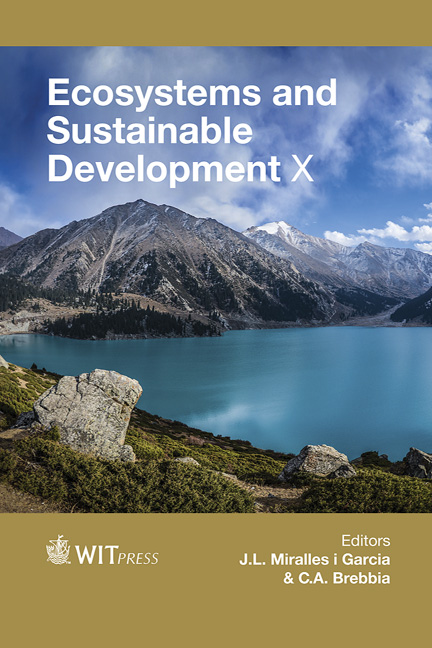Environmental Management Of Peri-urban Natural Resources: L’Horta De Valencia Case Study
Price
Free (open access)
Transaction
Volume
192
Pages
12
Page Range
99 - 110
Published
2015
Size
5,941 kb
Paper DOI
10.2495/ECO150101
Copyright
WIT Press
Author(s)
J. L. Miralles i Garcia
Abstract
L’Horta de Valencia is a peri-urban agricultural space with recognized values as a heritage: historic, cultural, agricultural, economic, landscape and natural resource. Across Europe, there are only six similar landscapes according to the DOBRIS report of the European Environment Agency (1998). Many studies and authors show their values. This historical zone has been irrigated, since the Medieval Age, by seven channels of Túria’s river, and irrigation water is managed by specific organization of seven irrigation communities, one for each channel, with a historical Court of Waters. UNESCO named the Court of Waters as a World Heritage. The surface of the irrigation zones historically was very extensive with about 23,000 ha. Today there are about 12,000 ha. There have been several attempts to plan and protect this area and landscape, but so far, none has succeeded. The last attempt was in about 2006 by the Territorial Action Plan to Protect Horta of Valencia, finalized in 2010 but not approved. Meanwhile, the urbanization of agricultural areas has continued. In fact, this situation occurs as a result of management problems. Protection of anthropic spaces requires maintenance of existing economic activities, particularly, but not only, agricultural activities. Stakeholders expect more income from urbanization processes. Therefore, the main problem to execute any plan with success is the management of agricultural space to maintain economic activities associated with the agricultural landscape. This paper analyzes the behavior of stakeholders and structural causes that explain the failure of Horta planning and propose management systems to generate objective conditions in order to maintain this exceptional landscape.
Keywords
territorial management, agricultural heritage, peri-urban zones, regional planning





